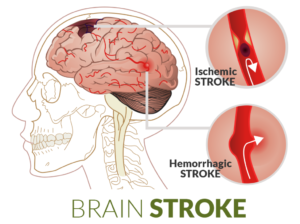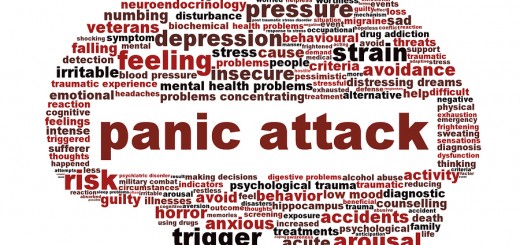What is a Stroke and who is at risk?
A stroke happens when the blood supply to the brain is disrupted, either by a blood clot blocking an artery or bleeding due to a burst blood vessel, and the brain cells are deprived of oxygen and other nutrients, resulting in the damage and death of some brain cells.
There are two main types of stroke, each with a different cause. An ischemic stroke, occurs when a blood clot blocks an artery serving the brain, disrupting blood supply. Accounting for 85% of strokes, it is often caused by a build up of cholesterol and other debris in the arteries (atherosclerosis) over many years.
The second main type of stroke is a hemorrhagic stroke, when a blood vessel in or around the brain bursts, causing a bleed or haemorrhage. Longstanding, untreated high blood pressure places a strain on the artery walls, increasing their risk of bursting and bleeding.
A hemorrhagic stroke may be due to a cerebral haemorrhage (accounting for ten per cent of strokes) where a blood vessel bursts within the brain itself or a subarachnoid haemorrhage, in which a blood vessel on the surface of the brain bleeds into the subarachnoid space between the brain and the skull, accounting for five per cent of strokes.
While some strokes are fatal, others cause permanent or temporary disabilities. Around a third of people who have a stroke die within a year, a third are left with serious disabilities and the remainder make a good recovery.
Studies have shown that hospital administration of a thrombolytic (clot-busting) drug improves outcomes if given to patients with ischemic stroke within three hours of the onset of symptoms. The only way to tell the difference between an ischemic or hemorrhagic stroke is by doing a scan of the brain (CT scan).
What are the main risk factors for a stroke?
Strokes can affect anyone at any age, although higher risk groups include patients with:
- hypertension
- heart disease
- elevated cholesterol levels
- diabetes
- smoking and alcohol use
- obesity
- inactive lifestyle
Uncontrollable risk factors include age greater than 55 years, male, race, heredity and history of a previous stroke.






